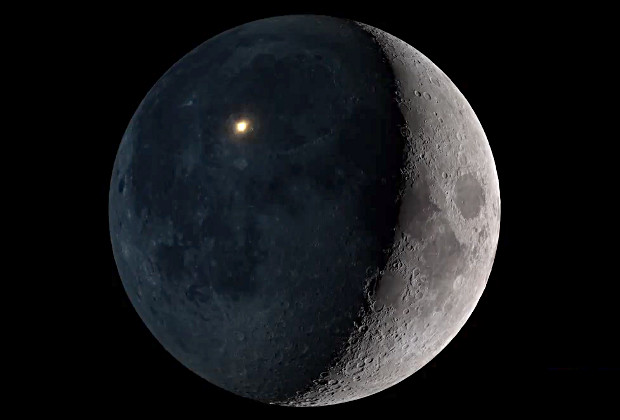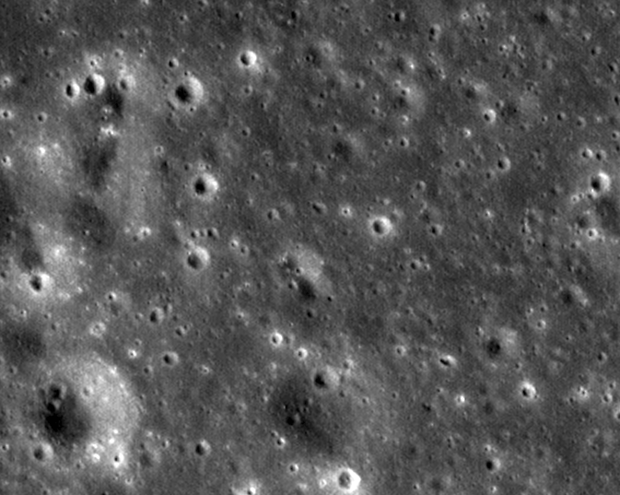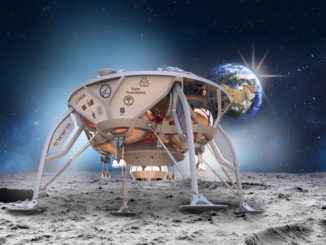
This bright flash was recorded by researchers at NASA’s Marshall Space Flight Center in Huntsville with coordinates 20.6°N, 336.1°E. The Lunar Reconnaissance Camera (LROC) scientists were able to obtain observations before and after the impact. Comparing the actual size of the crater to the brightness of the flash helps validate impact models.
LROC’s first set of post-impact flash images acquired on May 21th, 2013 by the Narrow Angle Camera (NAC) were targeted on the Marshall-reported coordinates and numerous small surface disturbances (“splotches”) were detected by comparing the pre- and post-flash images, but no new crater was found.
A second set of NAC images was acquired on July 1st, 2013, showing three faint ray-like features and several chains of splotches and asymmetric splotches that generally pointed to a common area west of the Marshall coordinates. A NAC pair was targeted on that convergence point for July 28, 2013; comparison of this third set of images with preexisting coverage revealed a new crater.
The results were published in the January 31st edition of the journal Icarus.
The March 17th impact crater is one of thousands of craters being mapped by the instrument. The LROC team is going back to images taken in the first year or two and comparing them to recent images. Called temporal pairs, these before/after images enable the search for a range of surface changes, including new impact craters, formed between the time the first and second image were acquired.
As of January 1st, 2015, LROC has acquired about 10,000 before and after image pairs.
Launched on June 18th, 2009, LRO has collected a treasure trove of data with its seven powerful instruments, making an invaluable contribution to our knowledge about the moon. LRO is managed by NASA’s Goddard Space Flight Center in Greenbelt, Maryland, for the Science Mission Directorate at NASA Headquarters in Washington.



